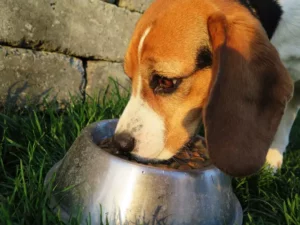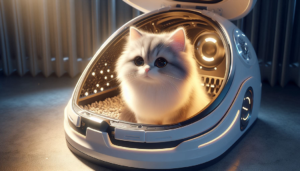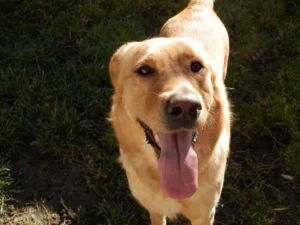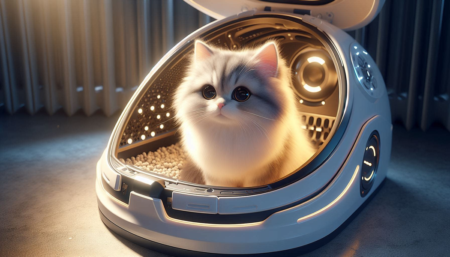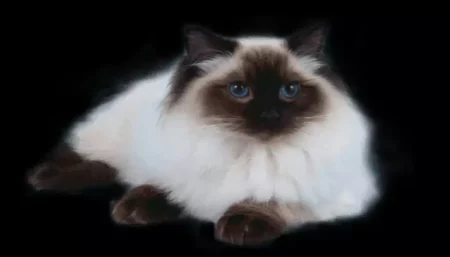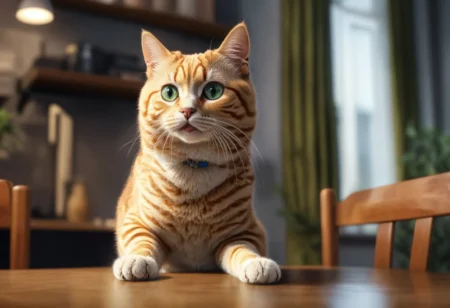Are you a cat lover searching for a furry companion that will bring you happiness and warmth? Look no further than fluffy cat breeds. These adorable long-haired felines are popular among cat enthusiasts for many good reasons.
Their unique characteristics set them apart from other cats, making them a charming and delightful addition to any household. With their luxurious and fluffy coats, they possess a certain charm that captivates the hearts of cat lovers everywhere.
Secondly, their suitability as pets makes them popular for those seeking a loyal and affectionate companion. They are known for being friendly, cuddly, and loveable, bringing joy and warmth to their owners’ lives.
Overall, there are countless reasons to love fluffy cat breeds. From their unique characteristics to irresistible charm, these felines will win your hearts and become lifelong companions.
So, if you’re searching for the perfect furry friend, consider adopting one of these adorable fluffy cats and experience the love and companionship they bring.
Contents
- 1 What are Fluffy Cat Breeds?
- 2 The Unique Characteristics of Fluffy Cat Breeds
- 3 Popular Fluffy Cat Breeds for Adoption
- 4 The Appeal of Fluffy Cat Breeds
- 5 Fluffy Cat Breeds with Blue Eyes
- 6 Fluffy Cat Breeds with Short Hair
- 7 Fluffy Cat Breeds Pictures
- 8 The Joy of Owning a Fluffy Cat Breed
- 9 Finding Your Perfect Fluffy Companion
- 10 Conclusion
What are Fluffy Cat Breeds?
Fluffy cat breeds are long-haired cats that have a thick, luxurious coat. These cats have been bred specifically for their unique and smooth appearance, making them a favorite among cat enthusiasts.
While many cat breeds have some fluffiness, certain species are known for their fluffy coats. Some of the most popular soft cat breeds include the Persian, Maine Coon, Ragdoll, and Himalayan breeds.
The Characteristics of Long-Haired Cats
Long-haired cats, or fluffy cat breeds, have several distinctive characteristics that set them apart from other cats. Their most apparent trait is their long, thick fur coat, which can range from silky and soft to coarse and dense.
While their fur is stunning, regular grooming is also required to keep it healthy and free from mats and tangles. Fluffy cat breeds also tend to shed quite a bit, so their humans must be prepared to clean up after them frequently.
The Popularity of Fluffy Cat Breeds
There are many reasons why fluffy cat breeds are so beloved among cat enthusiasts. Their beautiful and unique appearance, as is their friendly and affectionate personality, is undoubtedly a factor.
Many fluffy cat breeds are also known for their laid-back and easygoing nature, making them an excellent fit for families with children or other pets. Their soft appearance makes them an ideal lap cat, providing plenty of warmth and comfort on a cold day.
Caring for Fluffy Cat Breeds
If you’re considering adopting a fluffy cat breed, it’s essential to understand that they require more maintenance than short-haired cats. Regular grooming is necessary to keep their coats healthy and prevent mats and tangles from forming.
In addition to grooming, fluffy cat breeds also benefit from a healthy diet and regular veterinary checkups. With proper care, these gorgeous felines can live happy and healthy lives for many years.
The Unique Characteristics of Fluffy Cat Breeds
Fluffy cats are irresistible, with their long, luxurious coats and charming personalities. However, their soft appearance requires more grooming than a typical short-haired cat, making them high-maintenance pets. Let’s explore the unique characteristics of soft cat breeds in greater detail:
1. Luxurious Coats
The most defining feature of fluffy cat breeds is their long, smooth coats. These coats require regular grooming to prevent matting and tangling.
Depending on the species, their coats may be thick, woolly, silky, and flowing. Some of the most popular long-haired fluffy cat breeds include the Persian, Maine Coon, and Ragdoll.
2. High Maintenance Cats
Fluffy cats are undoubtedly high-maintenance pets because their coats require regular grooming, which includes brushing, bathing, and trimming.
In addition to their grooming needs, they are prone to hairballs, which can lead to digestive problems. As such, owners of fluffy cats must be willing to invest more time and effort into their cat’s care.
3. Affectionate Personalities
Despite their high-maintenance grooming needs, fluffy cats make up for it with their affectionate personalities.
These cats are known to be loyal and loving towards their owners, making them perfect for households seeking a cuddly companion.
Some breeds, such as the Himalayan and Siamese, are particularly vocal and enjoy interacting with their owners.
4. High Intelligence
Many fluffy cat breeds are highly intelligent, making them great problem solvers. They enjoy engaging in activities that challenge their minds, such as playing with puzzle toys or engaging in interactive playtime with their owners. Some breeds, such as the Norwegian Forest Cat, have even been known to learn tricks and commands.
5. Variety of Colors and Patterns
Fluffy cat breeds come in various colors and patterns, from solid colors to tabby stripes and even pointed designs. The Himalayan, for example, is known for its striking color point pattern, while the Persian is available in an array of colors from white to black and everything in between.
6. Great with Children
Many fluffy cat breeds are also great with children, making them a perfect addition to family households. These cats are generally patient and gentle, making them ideal playmates for kids. However, children should always be supervised when interacting with cats to prevent accidental injuries.
Overall, fluffy cat breeds are charming and lovable additions to any household. While they may require more maintenance than other cat breeds, their affectionate personalities, and stunning coats make them well worth the effort.
Popular Fluffy Cat Breeds for Adoption
Adopting one can be a great option if you have decided that a fluffy cat breed is right for you and your family. Here are some of the most popular fluffy cat breeds for adoption:
| Breed | Personality Traits |
|---|---|
| Persian | Quiet, affectionate, and calm |
| Maine Coon | Social, playful, and intelligent |
| Birman | Sweet-tempered, gentle, and loyal |
| Ragdoll | Relaxed, loving, and adaptable |
| Siberian | Outgoing, active, and friendly |
These breeds are known for their beautiful and unique appearances and charming personalities. Remember that fluffy cat breeds require regular grooming to keep their coats healthy and free of mats.
To adopt a fluffy cat, visit your local animal shelter or rescue organization. Reputable breeders can also provide information on available kittens and adult cats.
By adopting one of these adorable felines, you will gain a loving companion and give a deserving cat a forever home.
The Appeal of Fluffy Cat Breeds
Fluffy cat breeds have become increasingly popular in recent years, capturing the hearts of cat lovers worldwide. These adorable felines are known for their charming nature, cute and cuddly appearance, and unique characteristics that set them apart from other cats. Let’s dive deeper into the appeal of these popular fluffy cat breeds.
Their Unique Appearance
One of the main reasons why fluffy cat breeds are so beloved is their appearance. With their long, luxurious coats, fluffy cats have a distinctive look that sets them apart from other cats.
Their soft fur adds a layer of cuteness, making them almost irresistible to pet and cuddle. This unique appearance is something that many cat lovers find hard to resist.
Their Friendly and Affectionate Nature
Another reason why fluffy cat breeds are so popular is their friendly and affectionate nature. Many fluffy cats are known to be highly friendly and loving, enjoying human companionship and attention.
They love to snuggle up and cuddle with their owners, making them perfect pets for those who want a feline companion to share their lives with.
Their Playful Personality
Fluffy cats are known for their playful personalities, which can provide endless hours of entertainment for their owners. Many of these felines have an irresistible curiosity and love to explore their surroundings, making them great companions for those who want a fun-loving pet.
Their Unique Grooming Needs
While fluffy cats require more grooming than other cats, their unique grooming needs can be another appealing factor for prospective owners.
Brushing and grooming a fluffy cat can be a relaxing and enjoyable bonding experience for both the cat and their human. Plus, the satisfaction of seeing a well-groomed, fluffy feline is hard to beat.
Fluffy Cat Breeds with Blue Eyes
You’re in luck if you’re looking for a fluffy cat breed with stunning blue eyes that will capture your heart. Here are some of the most enchanting fluffy cat breeds with this mesmerizing feature:
| Breed Name | Appearance | Personality |
|---|---|---|
| Persian | Round face, soft fur, large blue eyes | Sweet, affectionate, and calm |
| Birman | White skin with colored points, striking blue eyes | Gentle, playful, and friendly |
| Ragdoll | Large and muscular, soft long hair, mesmerizing blue eyes | Gentle and relaxed, loves being held and cuddled |
| Siamese | Sleek and slender, short hair with blue eyes | Intelligent, playful, and curious |
Each of these fluffy cat breeds has its unique personality and appearance, but all share the stunning feature of mesmerizing blue eyes. They will capture your heart and bring joy and companionship to your life.
Fluffy Cat Breeds with Short Hair
When we think of fluffy cats, we often imagine long-haired felines with luxurious coats. However, not all soft cat breeds have long hair. Some species have shorter hair that still gives them that adorable, fluffy appearance.
These short-haired fluffy cats may require less grooming than their long-haired counterparts, but their unique characteristics and charm make them a great addition to any cat-loving household.
The Exotic Shorthair
The Exotic Shorthair is a fluffy cat breed closely related to the Persian cat. It has soft, plush coats that are denser and thicker than those of the typical short-haired cat. Its round, chubby face and big, expressive eyes give it a cute, cuddly appearance that is hard to resist.
The American Wirehair
The American Wirehair is a unique fluffy cat breed with a curly, wiry coat that gives them a smooth appearance. Their coats have a unique texture that is springy to the touch. They are affectionate and playful cats that are great companions for families with children.
The LaPerm
The LaPerm is a fluffy cat breed with a wavy, curly coat that gives them a charming, smooth appearance. Their coats come in various colors and patterns, making them a visually striking addition to any household. They are friendly, social cats that love to interact with their owners.
| Breed | Coat | Personality |
|---|---|---|
| Exotic Shorthair | Soft and plush | Cute and cuddly |
| American Wirehair | Curly and wiry | Affectionate and playful |
| LaPerm | Wavy and curly | Friendly and social |
No matter which short-haired fluffy cat breed you choose, you’ll get a charming and affectionate companion that will bring joy and warmth to your home.
Fluffy Cat Breeds Pictures
Prepare to be charmed by these adorable pictures of fluffy cat breeds. Below are some of the most popular and beloved fluffy felines that will make you want to adopt one.
| Fluffy Cat Breed | Picture |
|---|---|
| Persian |  |
| Maine Coon | 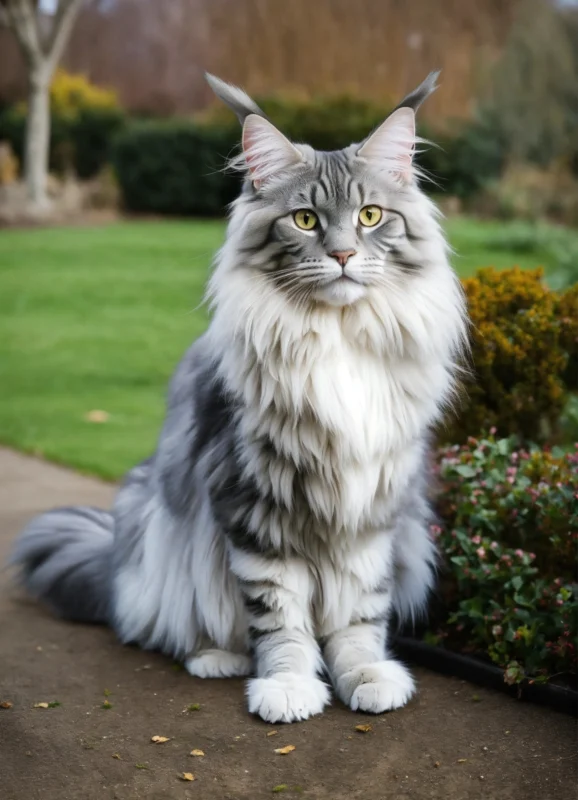 |
| Ragdoll | 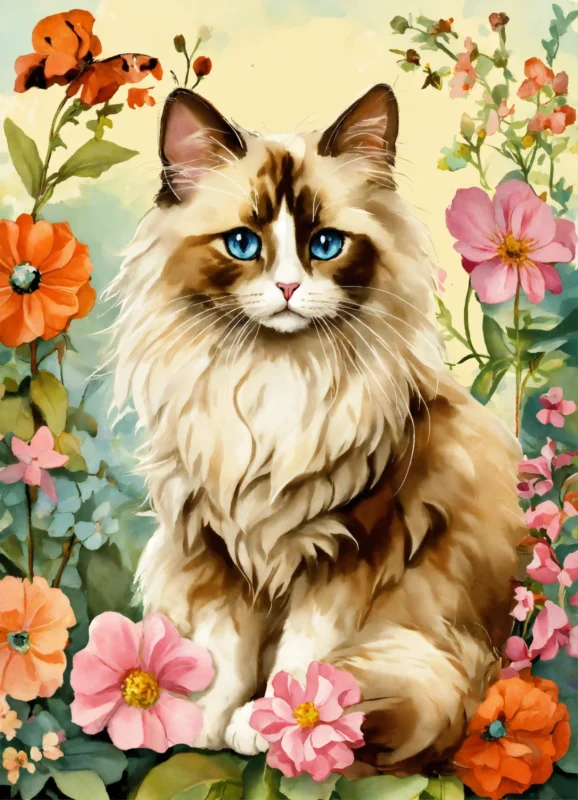 |
| Siberian | 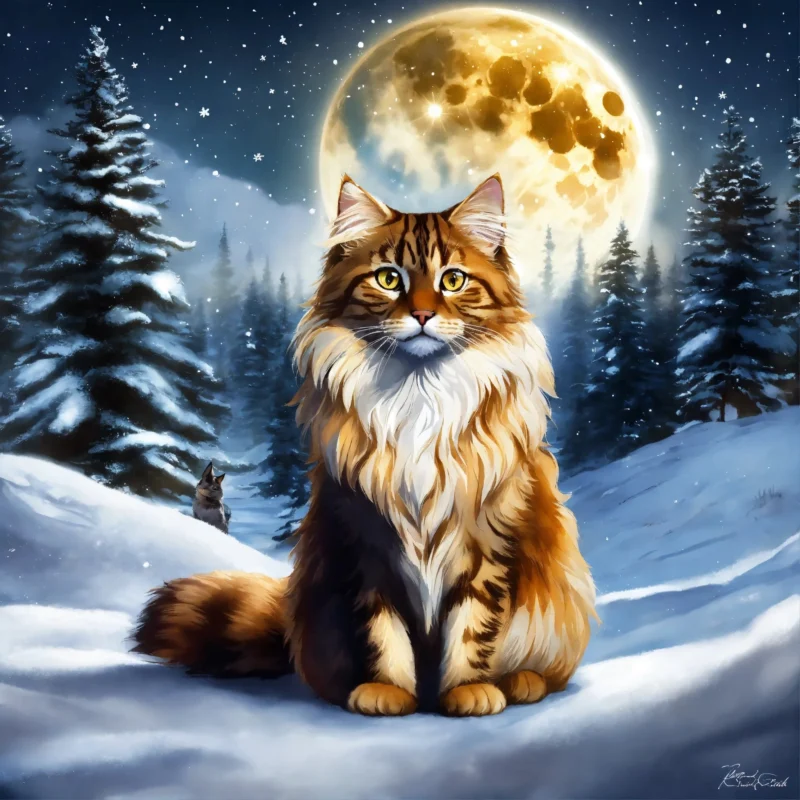 |
| Norwegian Forest | 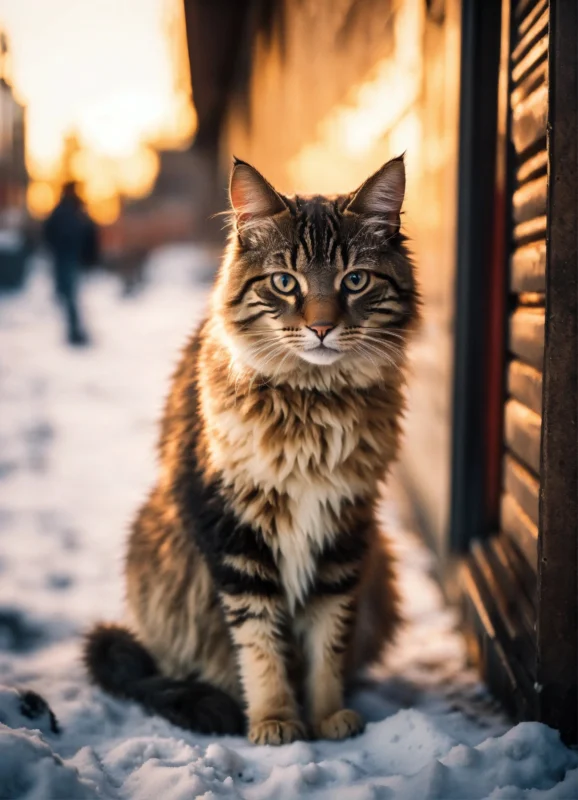 |
These pictures showcase the unique characteristics of each fluffy cat breed; from the Persians’ luxurious white fur to the Maine Coons’ majestic brown shaggy fur, each species has its charm and allure.
Now that you’ve seen these adorable fluffy felines, it’s hard not to fall in love with them.
The Joy of Owning a Fluffy Cat Breed
Many people love fluffy cat breeds for their adorable appearance and charming personalities. However, it’s important to note that owning a fluffy cat comes with responsibilities.
These high-maintenance cats require regular grooming to maintain the health and cleanliness of their long coats.
Owning a fluffy cat breed can bring immense joy and companionship despite their grooming needs. These cats are often affectionate and loving, making them great pets for families and individuals. Their soft and fluffy coats also make them great cuddle buddies!
If you’re considering adopting a fluffy cat breed, it’s essential to understand the level of commitment required to care for them properly.
Regular brushing and grooming sessions will be necessary to prevent their fur from matting and to remove loose hair. Keeping their environment clean and tidy is essential to avoid irritations or infections from dirty surroundings.
Despite the added responsibility, owning a fluffy cat breed can be a rewarding and fulfilling experience. Their unique personalities and charming appearances will capture your heart and make them a beloved family member.
Whether you choose a long-haired or short-haired fluffy breed, the joy and love they bring to your life will be worth the extra effort.
Finding Your Perfect Fluffy Companion
Now that you’ve learned about fluffy cat breeds’ unique and lovable characteristics, you may consider adopting one as your new furry companion. Here are some tips to help you find your perfect match:
Consider Adoption
There are many fluffy cat breeds in need of forever homes, and adoption is a great way to give a cat a second chance while also finding a loving companion for yourself. Check with your local shelters and rescue organizations to see if fluffy cats are available for adoption.
Research Different Breeds
While all fluffy cat breeds share the common trait of having long or thick coats, each species has unique personality traits and care needs. Research different fluffy cat breeds to find one that matches your lifestyle and personality.
| Breed | Traits |
|---|---|
| Persian | Quiet, loyal, and affectionate. Requires daily grooming. |
| Maine Coon | Intelligent, playful, and gentle. Requires regular grooming. |
| Ragdoll | Relaxed, affectionate, and great with children. Requires weekly grooming. |
Find a Reputable Breeder
If you’re interested in a specific fluffy cat breed, look for a reputable breeder who follows ethical breeding practices. Avoid purchasing from pet stores; they often source their animals from puppy mills or other unethical breeding operations.
Prepare Your Home
Before bringing your new fluffy friend home, ensure you have everything they need, such as a litter box, scratching post, food and water bowls, and toys. You may also designate a cozy space for them to relax and nap.
Enjoy Your New Feline Friend
Once you’ve found your perfect fluffy companion, enjoy the love and affection they bring to your life. Remember to give them plenty of attention and care; they will reward you with their loyalty and companionship for years.
- Check with local shelters and rescue organizations for adoptable fluffy cats.
- Research different fluffy cat breeds to find one that matches your lifestyle.
- Find a reputable breeder if you’re interested in a specific breed.
- Prepare your home with everything your new fluffy friend needs.
- Enjoy the love and companionship of your new feline companion!
Conclusion
In conclusion, fluffy cat breeds are an excellent choice for anyone looking for a charming feline companion. With their long, silky coats and unique characteristics, they capture the hearts of cat lovers everywhere. These cats require high maintenance, but their affectionate personalities and unmistakable charm make it all worth it.
If you’re considering adopting a fluffy cat breed, many options are available, from adoption centers to reputable breeders. Research the breed’s grooming needs and personality traits before deciding.
Tips for Caring for Your Fluffy Feline
Regular grooming is essential to keeping your fluffy cat looking and feeling its best. This includes brushing its coat daily and periodic visits to a professional groomer. Proper nutrition and exercise will also ensure your cat remains healthy and happy.
Final Thoughts
We hope this article has provided helpful information about fluffy cat breeds and the joys and challenges of owning one. Whether you prefer a long-haired or short-haired fluffy feline, these cats make an excellent addition to any home. Consider adopting one today and experience the love and companionship they bring.
